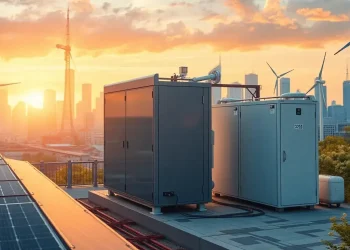
On March 28, 2025, at 02:29, the largest industrial park for microgrids in Jiangsu province officially commenced operations. This project is located in Changzhou and is set to support the development of renewable energy sources.
The microgrid system is constructed by the Changzhou Yancheng Construction Development Group in collaboration with the State Grid Changzhou Power Supply Company. It has a total field area of 370,000 square meters and is expected to consume approximately 420 million kilowatt-hours of electricity annually. The facility is designed to provide stable and reliable green energy solutions for residential buildings, commercial spaces, and electric vehicles.
This project aims to advance various aspects of energy efficiency and is designed as a “smart grid” that integrates energy generation, storage, and distribution. With the capability to reduce energy consumption by over 10%, it represents a significant step towards sustainable energy practices.
In addition to electrical generation, the facility will also implement energy storage technologies, including lithium-ion batteries, lead-acid batteries, and new water-based energy storage systems. These innovations will contribute to the facility’s capability to efficiently manage energy supply across multiple formats.
Currently, the newly established industrial park is set to host over 200 electric vehicles and has plans for four vehicle charging stations. The intelligent transportation system will allow drivers to charge their vehicles without any hassle, ensuring seamless integration with the microgrid management platform.
According to estimates, the project is expected to save about 460 million yuan in energy costs each year and reduce carbon dioxide emissions by approximately 7,585 tons. The payback period for this investment is projected to be around 4.5 years.
The State Grid Changzhou Power Supply Company has stated that “multiple microgrid technologies will contribute to establishing a green and low-carbon industrial park.” This indicates a commitment to promoting sustainable energy solutions that can be replicated across different environments.
As this project progresses, it is anticipated to become a model for future green energy developments, reflecting a commitment to innovation and environmental responsibility in energy production.







